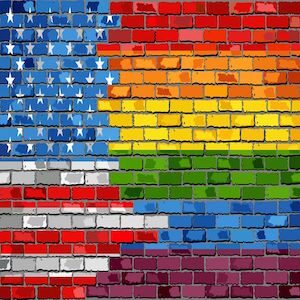

As we enter Pride Month, it’s a good time to reflect on where we are. President Biden recently announced a renewed push for full legal equality for LGBTQ individuals, but that takes place against a background of continuing bias, including a new legal focus in many states on rolling back civil rights protections. There are battles that are being fought in the statehouses and halls of Congress, in people’s hearts and minds, and that is where there’s been a great deal of evolution in the past few years. Looking at the levels of social and interpersonal bias, we are now in a much different situation than we were when this blog started 10 years ago.
To be sure, there is still bias against those whose sexuality differs from the norm, and that bias still matters in the courtroom: LGBTQ individuals may be accorded less credibility or trust, may be seen as more likely to have engaged in some crimes, and could be seen as subtly less worthy of money damages. In this post, I want to share a few conclusions on what we know about anti-gay bias especially, as it might impact evaluations of a party in a civil or criminal case
Society Has Come a Long Way
Anti-gay bias has been falling sharply. In a past post, I wrote about the sea change in attitudes leading up to and continuing from the Obergefell Supreme Court decision allowing gay marriages across the country. As entertainment culture adapted with more gay characters, and as our friends, neighbors, and family members became more comfortable living their lives openly, we saw a dramatic falloff in opposition to equal civil rights and social participation. Interesting, that change influenced both explicit and implicit biases, and the broad shift continues to serve as a novel and timely social science test case on the ways that even hardened social attitudes can change in a relatively short time.
Society Still Has a Long Way to Go
In controlled experimental settings, varying the sexuality of a party in litigation still impacts the results. In part, that occurs when mock jurors apply stereotypes (e.g., the myth that gay individuals are more likely than straight individuals to engage in child sexual abuse). Results are also impacted even when the case has nothing to do with those stereotypes. Even this year, a study (Mirabito & Lecci, 2021) demonstrated that anti-gay bias predicted convictions for gay defendants in both stereotype-consistent and stereotype-inconsistent scenarios.
Anti-gay bias is an attitude that can be measured as part of jury selection and is also a characteristic that tracks closely with a more generalized personality dimension that I’ve written about before: authoritarianism. The psychological tendency to support conventional beliefs and strong social rules and order also tracks with a bias against those perceived to be outside these norms. Given a tendency to deny explicit bias against individuals when asked about them in a courtroom context, it may be more productive for litigants seeking to uncover anti-gay bias, as well as bias against other perceived “outsiders,” to ask about attitudes on psychological authoritarianism instead.
While society has made some steps forward, there is also a pendulum effect to it, and perceived progress motivates a backlash. So when it could impact your case, anti-gay bias is still something you want to look out for.
____________________
Mirabito, L. A., & Lecci, L. (2020). The impact of anti-gay bias on verdicts and sentencing with gay defendants. Journal of Gay & Lesbian Social Services, 1-24.